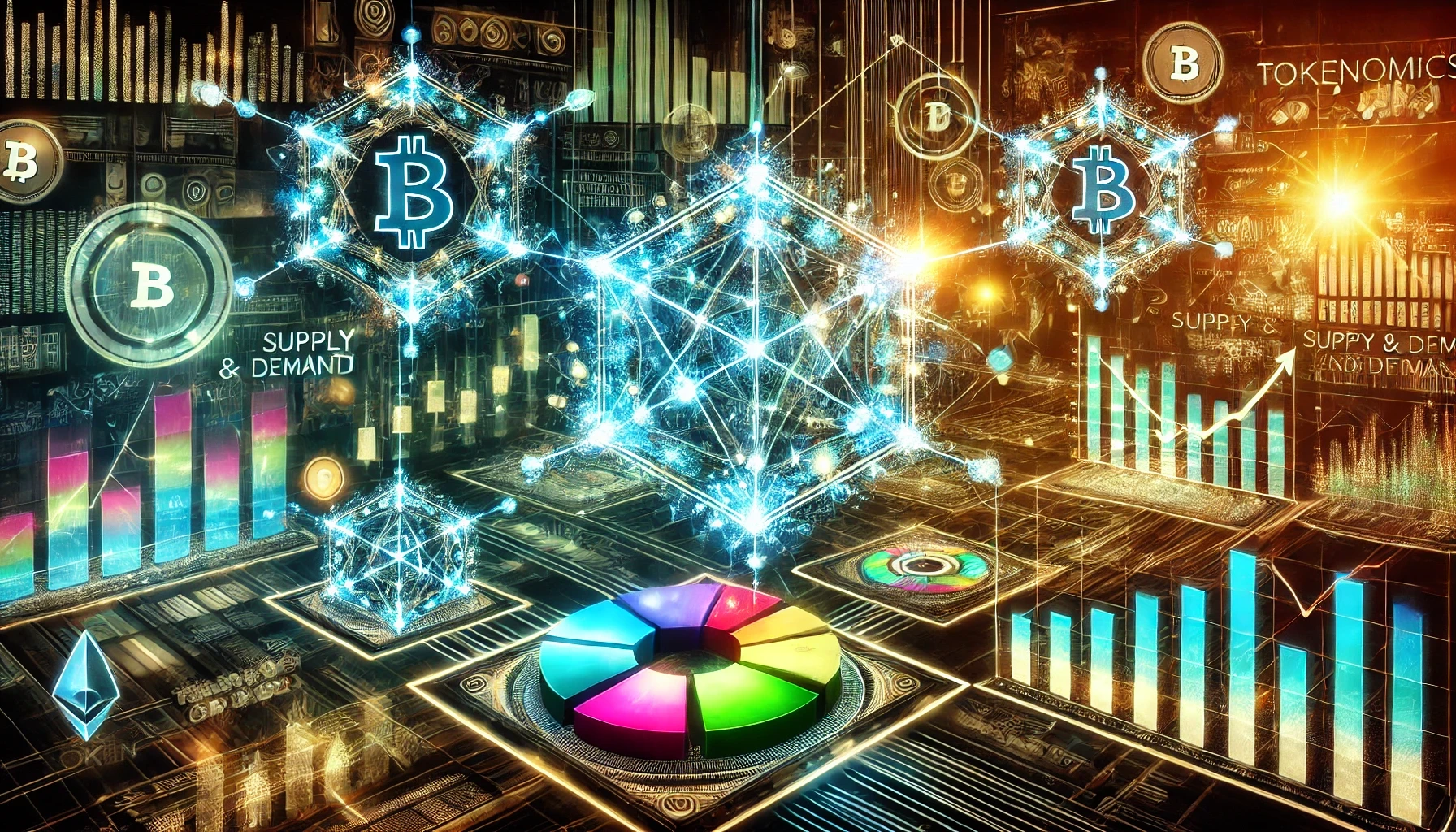What Is Tokenomics?
Tokenomics is the study of how tokens function within a blockchain ecosystem. It includes the design, distribution, and management of tokens, as well as their economic impact. Key components of tokenomics include:
Token Supply: The total number of tokens in circulation (e.g., fixed supply like Bitcoin or inflationary supply like Ethereum).
Distribution: How tokens are allocated (e.g., mining, staking, or initial coin offerings).
Utility: The purpose of the token within its ecosystem (e.g., governance, payments, or access to services).
Why Tokenomics Matters
Tokenomics plays a critical role in determining the value and sustainability of a token. Poor tokenomics can lead to inflation, lack of demand, or even the collapse of a project. On the other hand, well-designed tokenomics can drive adoption, incentivize participation, and create long-term value.
Key Elements of Tokenomics
Supply and Demand:
Fixed Supply: Tokens like Bitcoin have a capped supply, creating scarcity and potentially increasing value over time.
Inflationary Supply: Tokens with no cap may incentivize participation but can lead to devaluation if demand doesn’t keep up.
Distribution Model:
Fair Launch: Tokens are distributed through mining or staking, ensuring decentralization.
Pre-mining: A portion of tokens is created and distributed before public release, often to developers or early investors.
Token Utility:
Governance Tokens: Allow holders to vote on project decisions.
Utility Tokens: Provide access to services or products within a platform.
Staking Tokens: Reward users for securing the network.
Incentives and Rewards:
Staking, yield farming, and liquidity mining are common ways to incentivize token holders to participate in the ecosystem.
Examples of Tokenomics in Action
Bitcoin (BTC): Fixed supply of 21 million coins, distributed through mining. Scarcity and decentralization are key to its value.
Ethereum (ETH): No fixed supply, but transitioning to a deflationary model with Ethereum 2.0. Used for gas fees and smart contracts.
Binance Coin (BNB): Initially had a fixed supply but uses a burn mechanism to reduce supply over time, increasing scarcity.
Challenges in Tokenomics
Over-Inflation: Too many tokens in circulation can devalue the currency.
Centralization: Poor distribution models can lead to a concentration of tokens in the hands of a few.
Regulatory Risks: Governments may impose restrictions on token usage or distribution.
How to Evaluate Tokenomics
When analyzing a token, consider:
Token Supply: Is it fixed or inflationary?
Distribution: Is it fair and decentralized?
Utility: Does the token have a clear purpose?
Incentives: Are there mechanisms to encourage participation?
Team and Roadmap: Does the project have a clear vision and capable team?
The Future of Tokenomics
As blockchain technology evolves, so will tokenomics. Innovations like decentralized finance (DeFi), non-fungible tokens (NFTs), and layer-2 solutions are pushing the boundaries of what tokens can do. The future will likely see more sophisticated economic models, greater regulatory clarity, and increased adoption of tokens in everyday life.
Conclusion
Tokenomics is the backbone of any successful blockchain project. By understanding the economic principles behind tokens, you can make informed decisions as an investor, developer, or enthusiast. Whether you’re exploring DeFi, NFTs, or the next big blockchain innovation, tokenomics will always be a key factor to consider.
